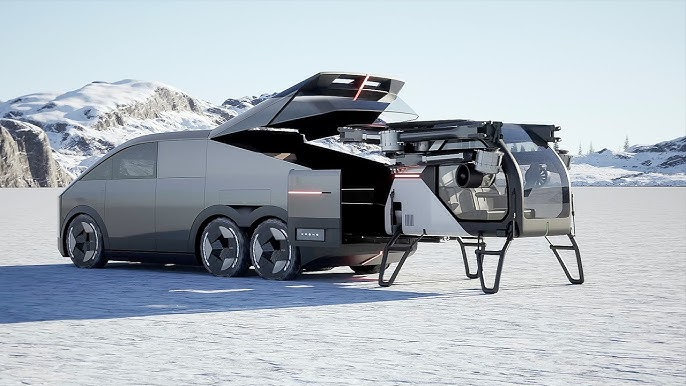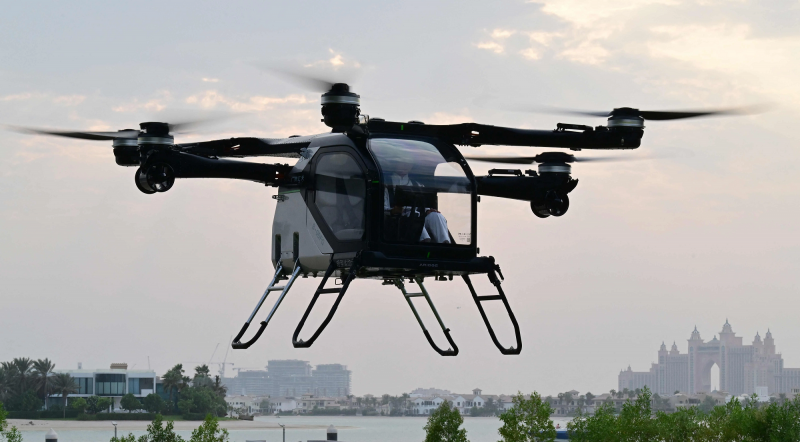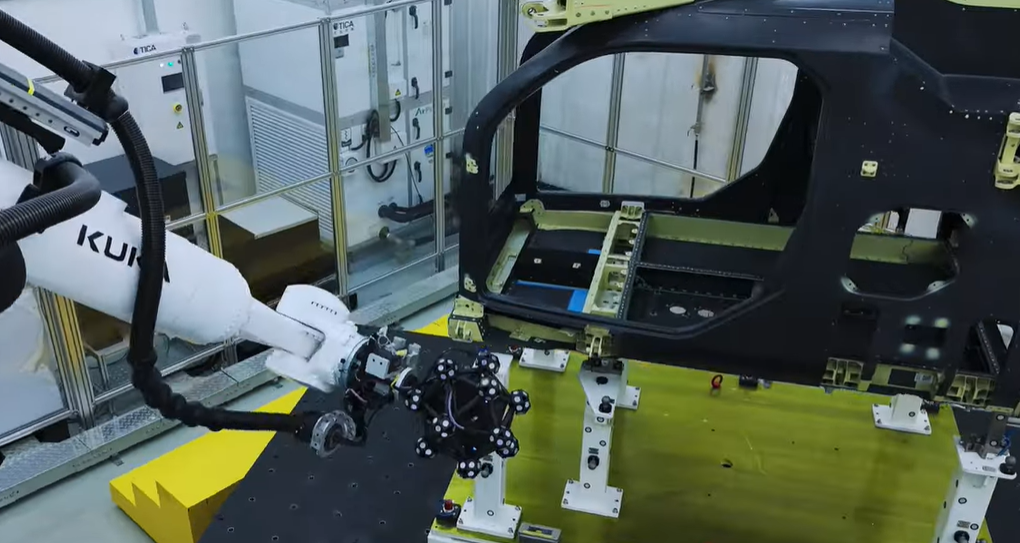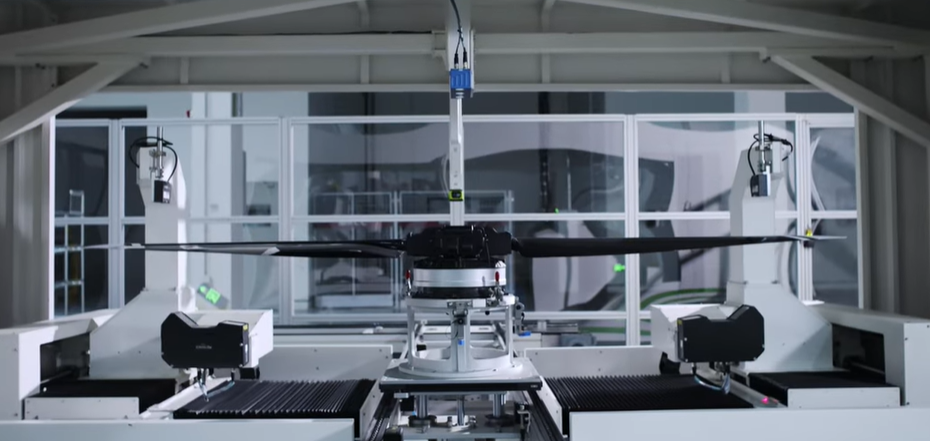Flying Car Factory Begins Automated Production in China
Chinese mobility manufacturer Aridge has commenced trial production of its modular flying-car concept, marking the first time a hybrid road-air vehicle has entered a structured, automotive-style manufacturing environment. For the metrology sector, the development introduces a new class of product in which aerospace-grade precision must meet automotive-scale throughput, creating unprecedented demands on measurement, inspection, and digital traceability.
Two-Module Vehicle Requiring Two Standards of Quality
 Aridge’s system consists of a ground module – a road-legal, six-wheel electric platform – and a detachable flying module incorporating a six-rotor ducted-fan architecture and carbon-fibre airframe. The two units mechanically dock to transfer power, avionics data and structural load.
Aridge’s system consists of a ground module – a road-legal, six-wheel electric platform – and a detachable flying module incorporating a six-rotor ducted-fan architecture and carbon-fibre airframe. The two units mechanically dock to transfer power, avionics data and structural load.
This dual-use design forces the manufacturing organisation to meet road-vehicle tolerances for the chassis while simultaneously achieving aviation-grade dimensional and structural accuracy on the flight module. Certification for both domains requires deep inspection traceability across sub-systems, from rotor assemblies to composite fuselage bonding.
Purpose-Built Manufacturing Facility
 The company’s new 120,000 m² facility in Guangzhou houses a highly automated vertically integrated operation designed specifically for hybrid flying-car production. Key manufacturing operations include:
The company’s new 120,000 m² facility in Guangzhou houses a highly automated vertically integrated operation designed specifically for hybrid flying-car production. Key manufacturing operations include:
Composites Manufacturing – One of China’s largest dedicated carbon-fibre production areas for aircraft-grade arms, rotor blades, and panel structures, requiring stringent dimensional and cure-cycle verification.
Propulsion and Rotor Assembly – Automated lines with closed-loop traceability for electric drive units, rotor-balance measurement, and vibration-profile validation.
Final System Assembly – A multi-stage line combining chassis, flight module, docking interface, avionics, and power systems. Cloud-based calibration tools support ADAS alignment, flight-control tuning, and centre-of-gravity measurement.
Digital & Green Manufacturing Architecture – Factory-wide energy monitoring, integrated sensor networks, and advanced MES systems designed to maintain process repeatability as the line scales.
At full production rate, Aridge targets production of one combined system every 30 minutes, with annual capacity rising from 5,000 to 10,000 units – levels unprecedented for an aviation-capable platform.
Hybrid Manufacturing Drives New Metrology Requirements
Aridge’s program illustrates several critical shifts now emerging in complex mobility manufacturing:
Convergence of Automotive and Aerospace Inspection

Flying-car production introduces overlapping requirements from both industries:
- Geometric control of composite assemblies typically associated with aircraft manufacturing
- Tight tolerance alignment of vehicle chassis and docking interfaces
- Verification of load-bearing structures for both road shocks and flight loads
This requires integrated metrology frameworks capable of handling mixed tolerance classes within a single product build.
Digital Thread from Composites to Certification

Certification of the flying module demands:
- Full traceability of each carbon-fibre lay-up
- Rotor-balance records and actuator calibration data
- Environmental and fatigue-test documentation
- Serialised tracking of electronic and software configurations
Aridge has aligned its MES and inspection architecture to create a continuous digital thread supporting road-worthiness, air-worthiness, and lifetime maintenance monitoring.
Inline Inspection for High-Throughput Aerospace Components
Production goals mean conventional aerospace metrology, often slow and batch-oriented, cannot be used.
- Inline optical metrology is deployed for composite dimensional verification
- Robotic measurement cells evaluate rotor geometry and assembly alignment
- High-speed AOI and LiDAR-based scanning support nondestructive structural checks
- Automated calibration stations validate flight-control sensors, inertial units, docking mechanisms and battery systems
This represents one of the earliest examples of aviation-grade inspection in an automotive-rate environment.
Modular Interfaces Create New Measurement Challenges
The core innovation – the ground-to-air docking system – requires:
- High-precision geometric compatibility
- Reliable mechanical and electrical coupling
- Wear and fatigue monitoring across repeated docking cycles
Metrology teams must evaluate both initial manufacturing accuracy and in-service degradation, demanding hybrid inspection strategies that combine dimensional measurement, sensor telemetry and predictive monitoring.
Scaling Toward 2026 Delivery
Aridge plans first customer deliveries in 2026 following certification. More than 7,000 pre-orders have been reported, and trial production units will serve for regulatory testing, reliability analysis, and validation of the factory’s inspection workflows.
For the metrology community, the program is a clear signal of an emerging sector where multi-domain measurement, digital manufacturing, and real-time inspection will form the backbone of next-generation production systems.
For more information: www.aridge.com








